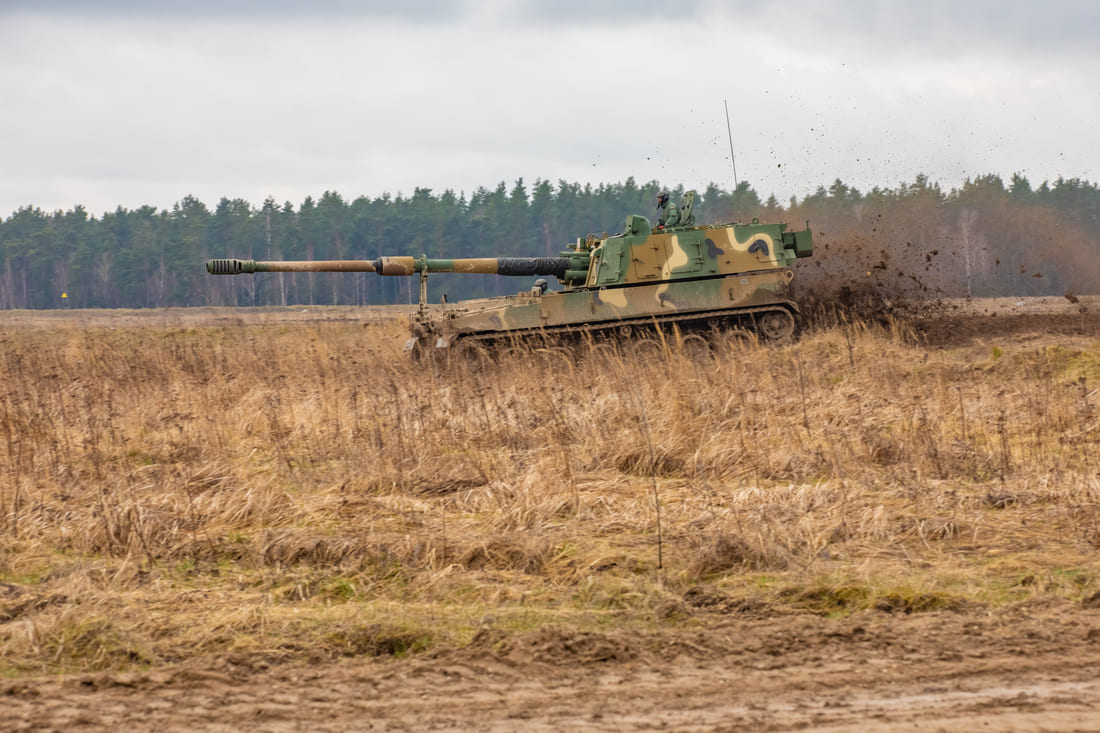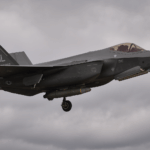Poland has secured a new armored-vehicle deal worth roughly $6.7 billion, anchored by a second contract with Hyundai Rotem for 180 K2 tanks. The agreement, signed in Gliwice with Polish and South Korean officials in attendance, is valued at about $6.5 billion. Deliveries begin in 2026 and will stretch well into the 2030s, with part of the K2PL production taking place inside Poland.
Defense Minister Władysław Kosiniak-Kamysz linked the purchase to broader domestic manufacturing plans. After the signing, he pointed to new arms plants opening accross the country and confirmed that Bumar-Łabędy in Gliwice will handle a portion of the work. Sixty one tanks from this batch will be built there, while the rest will arrive from South Korea under an agreed schedule.
Hyundai Rotem’s president, Lee Yong-bae, described the contract as a turning point for the program. He noted that the Gliwice site is being equipped with the tooling and test systems needed to run the K2PL line. Managers from both sides outlined a division of labor that shifts structural components, suspension assemblies and certain subsystems into Polish production once output levels are steady.
Defense officials confirm the agreement folds training, spares, test gear and documentation into the scope so brigades can field tanks and keep them running without separate casework. Initial batches will come from South Korea, with Polish-assembled K2PLs joining once the local line passes it’s acceptance checks.
What the Support Fleet Adds – 81 K2-Chassis Variants for Recovery, Engineering, and Bridging
Poland’s K2 program comes with its own set of support vehicles, all built on the same chassis as the tanks to keep formations uniform. The package includes:
- 31 armored recovery vehicles (ARV): for towing, lifting, and swapping power packs in the field.
- 25 combat engineering vehicles (CEV): fitted with blades, clearance kits, and obstacle-breaching gear.
- 25 bridge layers (AVLB): able to deploy spans rated for K2 weight with automated launch systems.
OBRUM and ZM Bumar-Łabędy take on much of this work. Design and hull integration stay in Poland, while Korea supplies long-lead components early in production. A shared chassis lets drivers and mechanics work on familiar systems, keeps tool inventories uniform and shortens recovery time when a vehicle gets stuck or throws a track. These variants are scheduled to arrive late in the decade and continue into the early 2030’s, in step with K2PL production.
Spare parts, special tools, test rigs and technical manuals will arrive alongside each batch, giving depots what they need before the first field excercises. Training packages cover crews, maintenance teams and instructors, with embedded simulators and courseware included. The goal is to avoid the common problems that follow rapid deliveries when vehicles reach units before the support gear is in place.
U.S. Annex-25 M1150 Assault Breacher Vehicles for the 18th Mechanized Division
Poland has ordered 25 M1150 Assault Breacher Vehicles under a U.S. contract annex. Built on the Abrams chassis, the ABV swaps the turret for a reinforced deck, adds a mine plow, and mounts two line-charge launchers for clearing minefields and complex barriers. Deliveries will run through 2029, with the first vehicles headed to the 18th Mechanized Division in Siedlce. The deal is worth about $115 million, covering spares, tool sets, and training.
Defense officials described the ABV as a direct link to Poland’s existing Abrams sustainment network. Breacher crews will train on line-charge deployment, lane marking and coordinated breach drills with manuever units. Using the Abrams base limits the number of unique parts, keeping brigade-level logistics simpler and supply lines shorter.
The ABV’s twin MICLIC launchers can fire explosive lines far enough ahead to clear safe lanes through dense obstacles. For protection, the vehicle carries a .50-caliber machine gun and smoke grenade launchers. In service, breachers will work alongside combat engineering vehicles, replacing the mix of older kits that have struggled against modern mine and obstacle systems.
Policy, Fielding Milestones, and What Changes for Units
Bumar-Łabędy in Gliwice will receive fixtures, process sheets and acceptance protocols to keep production standards consistent. New test cells and diagnostic gear will stay in use long after tank manufacturing end’s. OBRUM’s role will expand with engineering and bridging variants, which keeps more high value work inside the Polish Armaments Group instead of sending it abroad. Lee Yong-bae and Polish officials described the facility as a lasting support hub for K2 fleets across the region.
Payments are tied directly to delivery milestones and inspection results, with part of each tranche held back until quality benchmarks are met. With defense spending near 4.7% of GDP and heading toward 5%, there is room in the budget to fund training, spare parts, and workshop tools alongside the vehicles instead of scrambling for them at year’s end.
Current schedule:
- 2026: first K2GF deliveries; crew conversion courses; maintainer training on power packs and drivetrains; ABV training for division-level breacher teams.
- 2028-2030: K2PL assembly in Gliwice at planned capacity; K2-based recovery, engineering, and bridging vehicles fielded alongside tank battalions.
Program managers expect fewer bottlenecks once common parts stocks and test equipment are in place. Industry sources say local content could expand after stable production is proven over several lots, with hull and turret manufacturing among the potential additions. That would affect long-term sustainment costs as much as it would delivery-day readiness.
This week’s announcements add to Poland’s broader heavy armor portfolio. Abrams variants are arriving under U.S. contracts, while Leopard 2PL upgrades continue. The K2 and K2PL order increases available mass without pushing the older fleets to absorb all training demand, which in turn eases pressure on depots. Crews move into newer protection systems, and maintenance teams adopt inspection routines sized for the K2PL’s weight and configuration.
REFERENCE SOURCES
- https://euro-sd.com/2025/07/major-news/45232/poland-to-buy-another-180-k2s/
- https://www.reuters.com/markets/emerging/poland-signs-contract-buy-more-south-korean-battle-tanks-2025-08-01/
- https://www.reuters.com/business/aerospace-defense/poland-completes-negotiations-buy-south-korean-k2-tanks-agency-says-2025-07-02/
- https://www.defensenews.com/global/europe/2025/08/01/poland-doubles-down-on-south-korean-tanks-with-65-billion-deal/
- https://breakingdefense.com/2025/08/with-6-7-billion-in-new-tanks-and-vehicles-its-armor-week-in-poland/
- https://www.koreaherald.com/article/10545248
- https://koreajoongangdaily.joins.com/news/2025-08-02/national/defense/Poland-signs-65-billion-deal-to-purchase-second-batch-of-K2-tanks/2367180
- https://defence24.com/defence-policy/black-panthers-to-be-built-in-poland-k2pl-deal-signed
- https://armyrecognition.com/news/army-news/2025/poland-to-begin-production-of-first-k2pl-tanks-as-part-of-new-agreement-with-south-korea
- https://militaeraktuell.at/en/poland-continues-to-focus-on-heavy-metal-with-m1150-from-gdls/
- https://www.defensemirror.com/news/39969/Poland_Signs__115M_Deal_with_U_S__for_M1150_Breacher_Tanks
- https://news.ssbcrack.com/poland-signs-115-million-annex-with-u-s-for-25-m1150-assault-breacher-vehicles/
- https://obrum.pl/en/hyundai-rotem-and-obrum-partnership/



